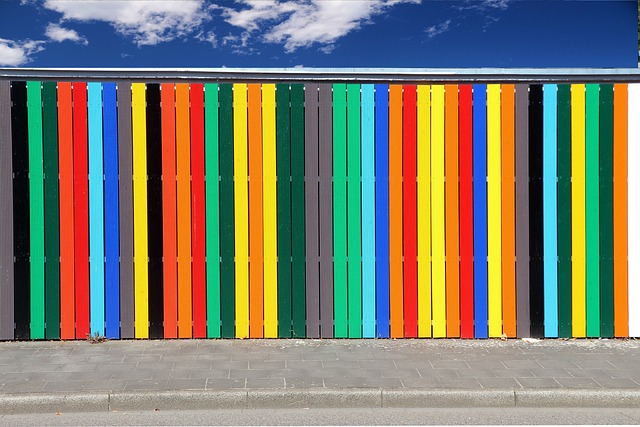In New Bedford, Massachusetts, a privacy fence can transform outdoor spaces into serene retreats. This article guides homeowners through the process of installing a secure and stylish barrier, offering an in-depth look at various fence types, benefits, and practical considerations. From understanding local regulations to selecting durable materials and maintaining your new fence, we cover all aspects of privacy fence installation in New Bedford, ensuring you make informed choices for your outdoor sanctuary.
- Understanding Privacy Fences: Benefits and Types
- Why Choose New Bedford for Installation?
- The Installation Process: Step-by-Step Guide
- Selecting the Right Materials for Durability
- Legal Considerations and Permits in MA
- Maintenance Tips for Long-Lasting Privacy Fence
Understanding Privacy Fences: Benefits and Types
Privacy fences serve as more than just a physical barrier; they are an investment in your home’s security, peace of mind, and property value. These fences provide a sense of seclusion from neighbors, passersby, and the hustle and bustle of public spaces. They offer a solution for those seeking to enjoy their outdoor areas without compromising privacy.
There are numerous types of privacy fences, each with its own unique features and benefits. Wooden fences exude classic charm and can be customized with various styles and finishes. Vinyl fences are low-maintenance and highly durable, making them a popular choice among homeowners. Metal fences offer both security and a modern aesthetic, often featuring intricate designs that add visual appeal to any property. Each type offers different levels of privacy, so it’s essential to consider your specific needs and preferences when choosing the right fence for your New Bedford, MA property.
Why Choose New Bedford for Installation?
New Bedford, MA, is an ideal location for privacy fence installation for several reasons. Firstly, the city’s diverse and well-established neighborhoods offer a range of suitable properties for fence projects, from residential areas to commercial lots. Secondly, the local climate supports year-round construction, allowing for efficient project timelines without significant delays due to weather.
Additionally, New Bedford boasts a vibrant community with a strong sense of local pride. This means that residents are generally supportive of outdoor improvements like privacy fences, enhancing the overall appeal and value of such installations. The city’s proximity to both coastal and rural areas also provides a unique aesthetic and lifestyle benefit, making it an attractive choice for those seeking both privacy and scenic beauty.
The Installation Process: Step-by-Step Guide
The installation process for a privacy fence in New Bedford, MA, involves several key steps to ensure a sturdy and effective barrier. First, measure the area thoroughly to determine the required materials and the layout of your desired fence. This includes assessing the height and length needed, as well as any specific design elements or corner cuts. Once the measurements are accurate, clear the site of any debris or obstructions that might interfere with construction.
Next, excavate the ground along the planned route of the fence line. Digging holes for posts is a crucial step; these should be deep enough to provide stability and support. After setting the posts in place, ensure they are level and secured properly. Then, attach the fence panels or boards to the posts, following manufacturer guidelines for the best results. The final touch involves adding the locking mechanism and any decorative elements to create a secure, private space.
Selecting the Right Materials for Durability
When it comes to privacy fences, choosing the right materials is paramount for ensuring both longevity and aesthetic appeal. In New Bedford, MA, where a range of climates can be experienced, durability should be at the forefront of your decision-making process. Opting for high-quality, weather-resistant materials like vinyl or treated wood will protect your fence from the elements, preventing rot, warping, and other forms of damage that could compromise its structural integrity over time.
Vinyl, for instance, is a popular choice due to its low maintenance requirements and resistance to fading, cracking, and breaking. Treated wood offers a more natural look while still providing excellent durability, though it may require occasional re-treating to maintain its protective coating. Regardless of your material selection, investing in a privacy fence that’s built to last will not only enhance the curb appeal of your property but also provide you with peace of mind for years to come.
Legal Considerations and Permits in MA
When considering a privacy fence installation in New Bedford, MA, understanding legal considerations and permit requirements is crucial. Massachusetts has specific laws and regulations regarding property fences, including height restrictions, permitted uses, and distance from property lines. Homeowners should check with their local city or town clerk’s office to obtain the necessary building permits, which may vary based on the fence’s design, materials, and location.
Failing to comply with these regulations can result in fines or even the requirement to remove the fence. It’s important to be aware of historical preservation districts or other zoning restrictions that might apply, as they could further limit or require modifications to your privacy fence design. Engaging with a licensed contractor familiar with local laws ensures your project stays in compliance from start to finish.
Maintenance Tips for Long-Lasting Privacy Fence
Regular cleaning and inspection are key to maintaining your privacy fence in New Bedford, MA. Start by sweeping or vacuuming the fence regularly to remove dirt, debris, and any leaves that may accumulate. Use a soft-bristled brush to gently scrub any stains or tough spots, and always rinse with clean water afterward.
Check for loose or damaged boards at least once a month. Replace any rotten or broken sections promptly to prevent further deterioration. Apply a fresh coat of sealant or paint every few years to protect the wood from moisture, UV rays, and pests, ensuring its longevity and preserving its aesthetic appeal.
